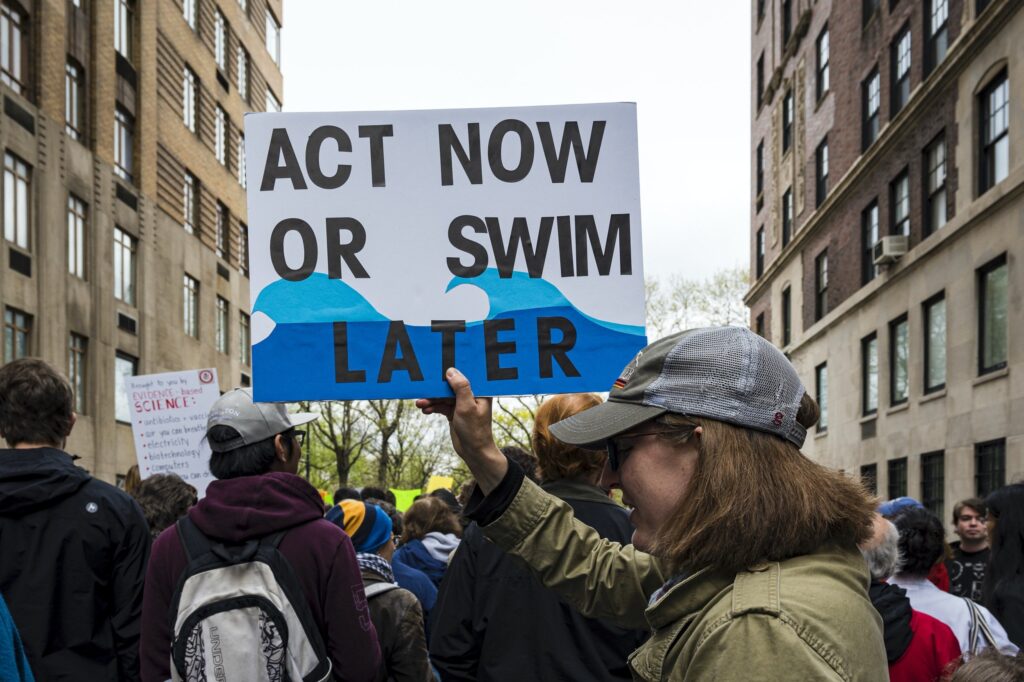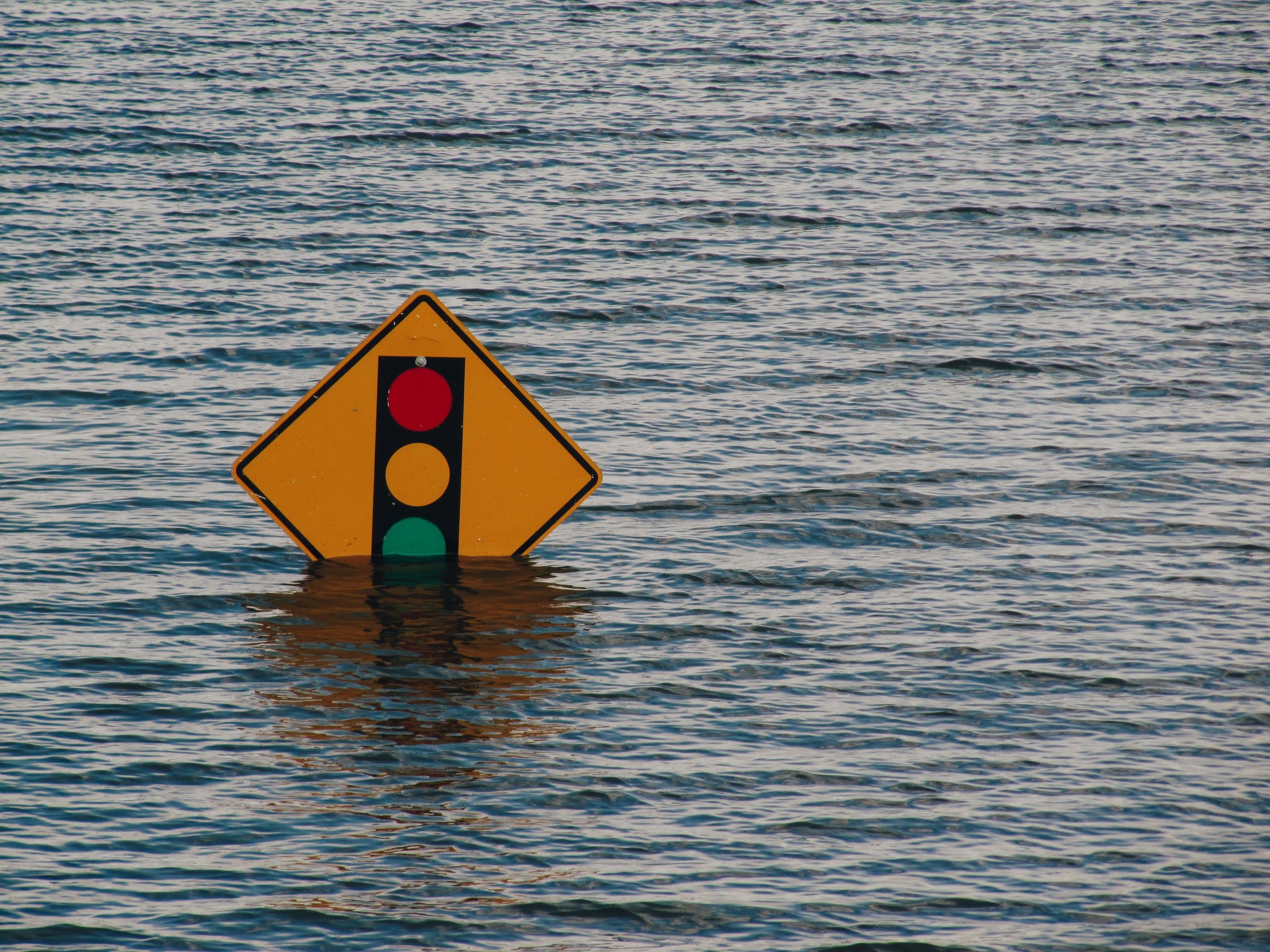I had my first panic attack since college last February. It was zero degrees outside, 38 degrees inside, and my house had been without electricity, heat, and clean water for almost a week. Our neighborhood was completely encased in ice, the roads unnavigable. My seven month old screamed (muffled through his five layers of clothing) as my dog bled from four snow-shredded paws. Oh, yeah: I live in Texas.
Although I’m a top notch worrier, I’m not without a healthy sense of adventure, and I’ve always relied on my own mental and physical strength to get me through treacherous situations. I’ve been (briefly) abducted crossing the border into Tajikistan and encountered a bear at dusk while lost on a solo trail run in Yosemite. In those situations, preparation (and luck) kicked in, and with time, the experience morphed into just another story.
The extreme weather of the past few years? That’s different. My usual coping skills may slow down my heart, my breathing, and my thoughts, but they can’t erase the progressive crisis our world is facing. This is climate change. It’s real, it’s an ongoing threat, and there’s no simple way to “just feel better” about it.
“One of the penalties of an ecological education is that one lives alone in a world of wounds.”
— Aldo Leopold, 1953

What is climate change anxiety?
The term “eco-anxiety” was defined in 2017 by the American Psychological Association as “the chronic fear of environmental doom,” though the general concept has been explored in the medical community for decades (and in art and literature for centuries). The exact nature of this distress is inherently personal: what we grieve reflects our experiences, our values, and the places that we love. However, some qualities are universal.
“Solastalgia,” coined by Glen Albrecht, is described as the feeling of desolation or melancholy due to environmental deterioration. He notes that it is exacerbated by a sense of powerlessness and a loss of one’s sense of place. In a way, it’s a homesickness experienced at home.
Cunsolo and Ellis went further by delineating three types of “ecological grief.”
Type 1 is the grief associated with physical losses. It’s the acute pain I feel when driving past a charred hillside, debris piling against soot-covered houses with every downpour. It’s also the sickening feeling I had as a child, returning every year as a witness to the “slow violence” against the beautiful white sand dunes on our favorite family beach. Over the years, my natural playscape was razed to make way for flimsy vacation rentals. As an adult, I’ve found it difficult to return.
Type 2, the grief associated with the loss of environmental knowledge, is the frustration of communities no longer able to participate in ancestral traditions or continue generations of farming, ranching, or other activities on the land. It’s the loss of predictability and preparedness, our skills and rituals now ineffective as our home changes around us. At its core, it’s mourning our identity and culture, the profound parts of ourselves that intimately connect with our environment.
Finally, Type 3 is the grief associated with anticipated future losses. While this is, in some ways, the most straightforward type of ecological grief (and fear), it’s also the most ambiguous. These losses are predictable, but uncertain. They threaten us in ways that are vague – until they’re not. With traditional grief, we can hope for closure around a defined absence in our life, but climate change is continuous. We may be able to catch our breath between natural disasters, but the long-term threat does not end.
Why is this so important to child psychiatry?
Young people care. Sixty percent of teens surveyed by Nature reported being “very” or “extremely” worried about climate change, and sadness and fear were the most commonly reported emotions. Less than ⅓ of respondents said they felt optimistic or even just indifferent. It would be wrong to lump this distress into the other diagnoses we treat in our offices. While climate change anxiety can co-occur (for example, with obsessive-compulsive disorder, major depressive disorder, post traumatic stress disorder, and others), it is also its own, unique beast.
When it comes to environmental disasters, we often focus on the tangible impact on our patients (lives lost, houses destroyed, etc.), even though the number of cases of psychological trauma exceed those of physical trauma by 40 to 1. The emotional toll of extreme weather is enormous. For example, 2021 Grantham Institute Briefing pointed to a 1% increase in completed suicides for every 1 degree C increase in temperature in vulnerable places.
And it’s our patient population that’s suffering the most. Children – particularly those who are low-income or otherwise marginalized – are disproportionately affected by climate change. People with pre-existing mental illness are at additional risk: a recent study referenced in the briefing showed that a prior psychiatric diagnosis was associated with a 2-3 times higher risk of death during a heat wave.
This was particularly salient for me last summer, as I sat in my stifling apartment, windows closed against the oppressive smoke from the Lightning Complex Fires. The pandemic made it impossible to be indoors, the wildfires made it impossible to be outdoors, so we sat in our 95 degree house, drinking cold seltzer and willing the electricity to hold out against rolling brown-outs. I looked down at my newborn, bathing him with a washcloth soaked in ice water, and apologized for the challenges he is and will be facing in his lifetime. I didn’t expect the next challenge to come six short months later with the Texas freeze. Now I know better: we can’t outrun or outspend climate change.

What can we do?
We are not going to be able to thought-journal ourselves out of this one. Our climate change worries may be problematic, but they’re not, at their core, unfounded. I would never tell a patient who was mourning the loss of a loved one to try not to think about them. Grief can be a powerful “we-creating” emotion, and connection – to other humans and to nature – are at the core of its treatment.
As I’ve mentioned, I’ve always relied on myself in times of threat, and initially, this was how I approached my eco-distress. After last year’s freeze, I found myself harassing solar companies and hoarding dry goods. It took a few choice words from my dad – “If we’re going down, we’re all going down together” – to remind me that the battle against climate change won’t be won by an individual.
My personal treatment for eco-anxiety
Though climate change isn’t something I can solve on my own, I can use my mental and physical strength to contribute to a greater group effort to slow down this ship. For me, this has meant joining a local organic gardening group, perusing Buy Nothing offerings on Facebook, and donating to ecological organizations like the Lady Bird Johnson Wildflower Center.
I’ve enjoyed the stinky, sinking satisfaction of my compost pile, and I love the convenience of my reusable Zip Top bags and Bee’s Wrap (though I struggle with reusable paper towels and I killed my garden… again).
My privilege allows (and inspires) me to advocate with my wallet, but change and companionship don’t have to cost anything. Others might benefit from a more traditional peer support group, like the Good Grief Network, or helping with research and standing witness via organizations such as I See Change. Taking a walk, picking up trash, or volunteering at a community garden are all free or low cost ways to, well, do something.
Final thoughts & other ecotherapy approaches
“Meaning-focused coping” is another way to help harness anxiety and reduce hopelessness. In her approach to “ecotherapy,” Patricia Hasbach suggests:
- Broadening our focus during clinical interviews to ask about our patients’ experiences, family philosophies, current interactions with and feelings about nature
- Rewilding patients by taking therapeutic work outdoors assigning nature-based homework (gardening, sketching, hiking, etc.), and helping patients find their special place in “the wild” to deepen their sense of belonging to this earth
- Using “nature language” to reconnect with more primal, instinctual social patterns (telling stories under the stars, grilling dinner over a fire, caring for an animal)
In our work as mental health clinicians, we want to foster curiosity over criticism. There’s no such thing as being a “perfect” steward of our environment. We’re all consumers – it’s a prerequisite for living. So while it’s always okay to express sadness, anger, regret, and even guilt, we can then refocus on what we can do and changes we can make, no matter how small.
Now, sitting under the changing leaves and looking out onto the placid Colorado River, I feel a mix of emotions:
- Appreciation for the natural beauty before me,
- An ache for the home I knew and the transience of the home I have,
- Fear for the next flood, drought, or freeze that I know will come,
- And a commitment to protecting what I can for my son, my patients, and my own future.


